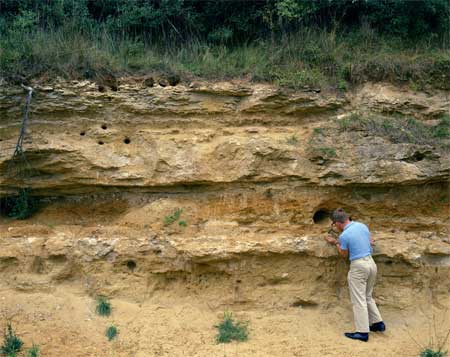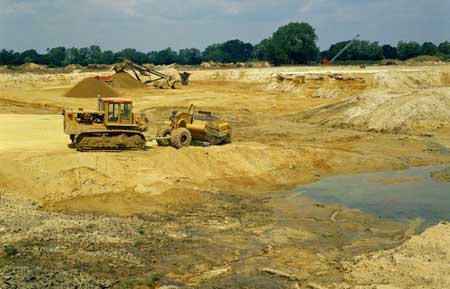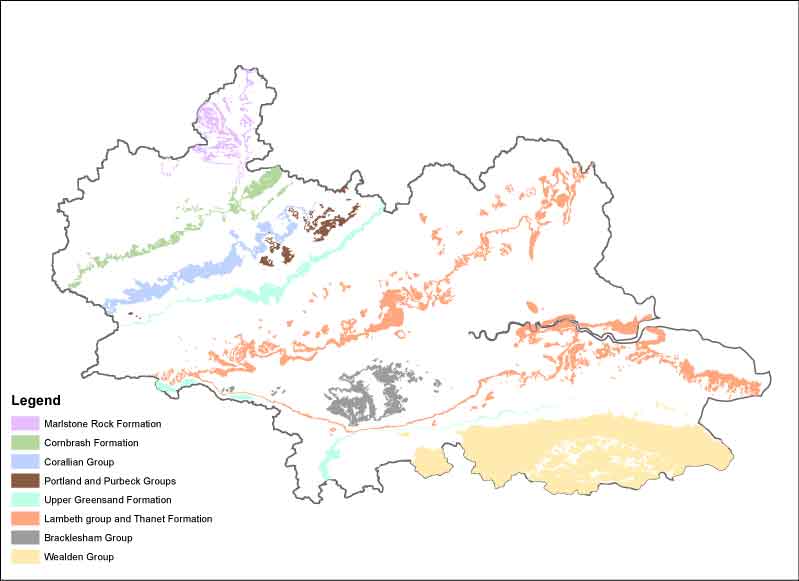Properties of minor aquifers within the Thames Basin
In addition to the principle aquifers of the Thames Basin, several minor aquifers are present.
These aquifers are not significant in terms of water resources but they are locally important and may support unique ecological habitats.
The minor aquifers of the Thames Basin are shown on the hydrostratigraphy table.
Additional information about some of the more well-known minor aquifers is provided below.
Corallian Group

The Corallian Group forms a south-west to north-east trending limestone ridge between Swindon in the south-west and Aylesbury in the north-east.
The Corallian deposits form a multi-layered minor aquifer with a highly variable lithology comprising limestones, sandstones and mudstones.
Aquifer porosity and borehole yields are also highly variable. The contrast in permeability resulting from the varied lithology gives rise to considerable spring flow and perched water tables.
Groundwater from the Corallian in the Thames Basin supports unique and ecologically important habitats such as saline springs in the Ock valley and calcareous fen near Marcham.
Upper Greensand Formation

The Upper Greensand Formation is comprised of both poorly consolidated and cemented sands and is separated from the Lower Greensand Formation by the Gault Clay.
The Upper Greensand Formation is frequently in hydraulic continuity with the overlying Chalk aquifer and the two units behave as one.
Springs which issue from the base of the Upper Greensand are thought to derive from Chalk groundwater regionally.
There are places within the Thames Basin however where marls at the base of the Lower Chalk keep the Chalk and the Upper Greensand separate.
River terrace deposits
There is an extensive covering of river terrace deposits within the Thames Basin associated with the River Thames itself and the rivers Kennet, Ock and Lee.
The large number of sand and gravel quarries within the Thames Valley is a reflection of the economic importance of these deposits to the aggregate industry.
The river terrace deposits are also of hydrogeological importance; with high porosity and high permeability the sand and gravel deposits provide a large storage volume within flood plains.
The distribution of this storage has a particular bearing on river flow characteristics and bank storage with implications for drought and flood resilience and river-aquifer nutrient exchange.
BGS projects about minor aquifers in the Thames Basin
- River Terrace Deposits of the Thames Basin
- Macdonald et al. 2007. Investigating the interdependencies between surface and groundwater in the Oxford area to help predict the timing and location of groundwater flooding and to optimise flood mitigation measures. Defra 42nd Flood and Coastal Management Conference, York
- Cobbing, J E, Moreau, M, Shand, P and Lancaster, A. 2004
Baseline Report Series 14: The Corallian of Oxfordshire and Wiltshire.
British Geological Survey Commissioned Report CR/04/262N - Bearcock, J M and Smedley, P L. 2010 Baseline groundwater chemistry: the Palaeogene of the Thames Basin. British Geological Survey, 89pp. (OR/10/057) (Unpublished)
Contact
Contact Stephanie Bricker for further information







